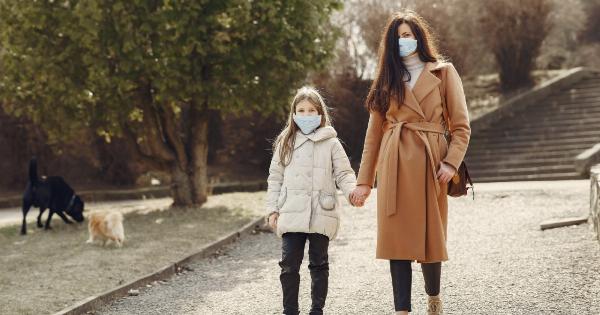The Ebola virus has been known to be one of the deadliest viruses in the world, with a mortality rate of up to 90%. The virus is transmitted through contact with the bodily fluids of infected individuals or through contact with contaminated surfaces.
But recent studies have suggested that the virus could become airborne, which would make it even more dangerous.
How the Virus Spreads
The Ebola virus is usually transmitted through contact with blood, the bodily fluids of infected people, or contaminated objects like syringes.
It is not an airborne virus, which means that it cannot be spread through the air like the flu virus or the common cold. However, recent studies have shown that the virus can be transmitted through the air in certain circumstances, such as when infected individuals cough or sneeze.
According to scientists, the Ebola virus has mutated several times since it was first discovered in 1976, with the most recent mutations suggesting that the virus could become airborne.
This means that the virus could potentially spread through the air and infect people who are in close proximity to infected individuals, without any contact with bodily fluids or contaminated surfaces.
The Dangers of an Airborne Ebola Virus
An airborne Ebola virus would be much more dangerous than the current form of the virus, which is already deadly. This is because an airborne virus would be much easier to transmit, as it could be spread through the air like the flu virus.
This means that the virus could potentially infect a much larger number of people, and could spread much more quickly.
In addition, an airborne Ebola virus would be much harder to contain, as it would require much more stringent measures to prevent its spread.
This could include measures such as quarantines, travel restrictions, and curfews, which would be difficult to enforce and could lead to civil unrest.
How to Prevent an Airborne Ebola Virus
The best way to prevent an airborne Ebola virus is to stop the virus from mutating in the first place. This can be done through a combination of measures, including:.
1. Vaccines
Vaccines are the most effective way to prevent the spread of infectious diseases. There are currently no vaccines for the Ebola virus, but researchers are working on developing them.
2. Sterilization
Contaminated objects and surfaces can be sterilized to prevent the transmission of the virus. This can be done through the use of disinfectants and other cleaning agents.
3. Education
Education is key to preventing the spread of the virus. People need to be educated about how the virus is spread, and how to prevent its transmission.
4. Quarantine
Infected individuals and those who have been in close contact with infected individuals should be quarantined to prevent the virus from spreading.
The Future of the Ebola Virus
The Ebola virus is a serious threat to global health, and the possibility of an airborne Ebola virus only serves to underscore this fact.
While the possibility of an airborne virus is still theoretical, scientists are working hard to prevent it from becoming a reality.
In the meantime, it is important for individuals and governments to take steps to prevent the spread of the virus, and to be prepared for any potential outbreaks.
This includes investing in research and development of vaccines, educating the public about the virus, and taking measures to prevent its spread.
Conclusion
The Ebola virus is a deadly virus that has already claimed the lives of thousands of people. While the possibility of an airborne Ebola virus is still theoretical, it is important to take the threat seriously and to take steps to prevent its spread.
With continued research and development, it is possible to prevent the emergence of an airborne Ebola virus and to protect people around the world from this deadly disease.































